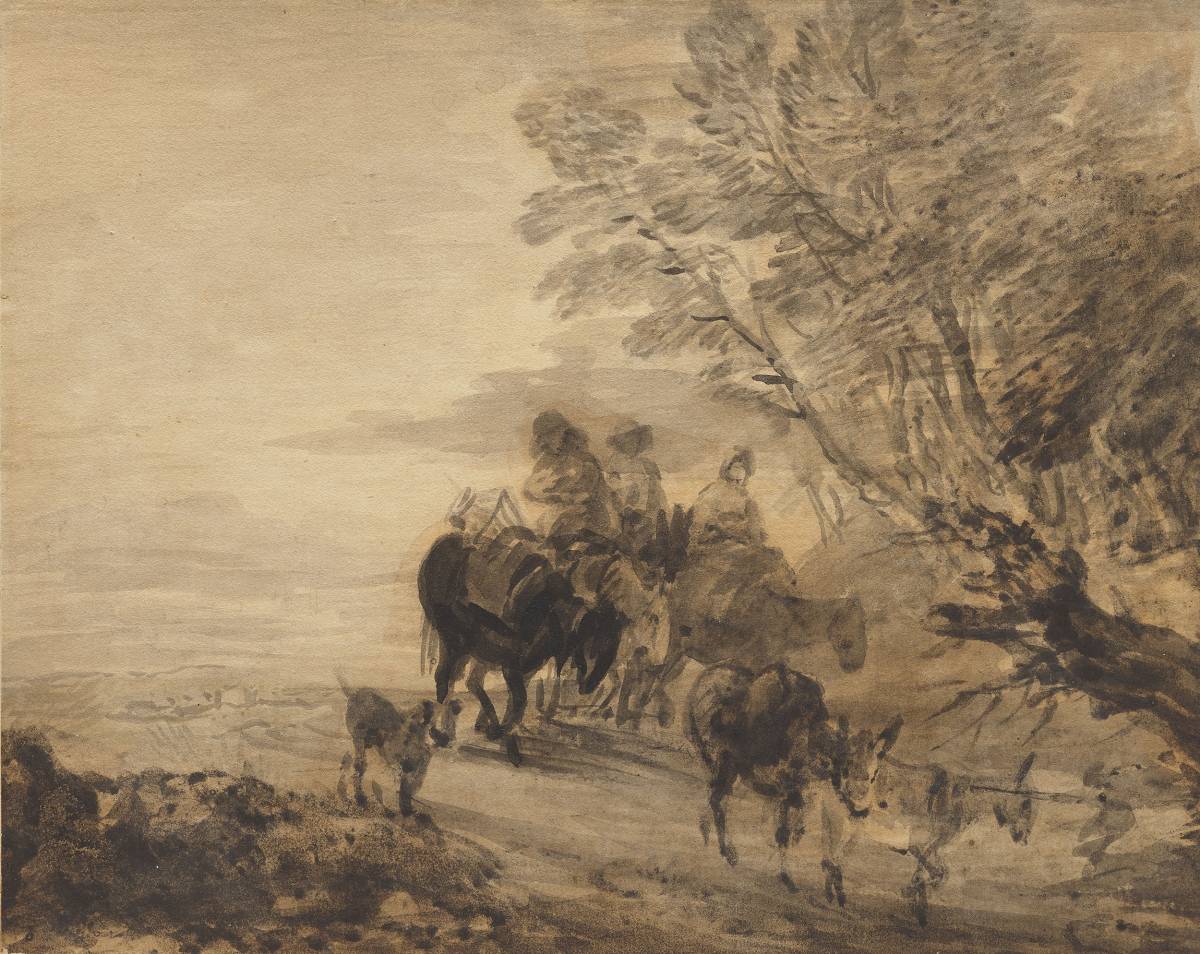Private collection, USA
Returning from market
- Brush and grey and brown ink, black crayon
- 7 ⅝ × 9 ⅝ inches · 195 × 246 mm
- Drawn c.1780
Collections
- Sir Jeremiah Colman (1859-1942);
- Walker Galleries, 1935;
- Percy Moore Turner (1877-1950);
- P & D Colnaghi;
- David Eccles, 1st Viscount Eccles (1904-1999), acquired from the above;
- Thomas Agnew & Sons, 1977;
- Francis Atherton Bean III, Minneapolis (1910-1998), acquired from the above;
- Bean sale, Sotheby's, London, 31 March 1999, lot 78;
- Private collection, Switzerland;
- Koller, Zurich, 1 April 2022, lot 3469;
- Lowell Libson & Jonny Yarker Ltd.
Exhibitions
- London, Walker Galleries, 31st Annual Exhibition of Early English Walter-colours, June to Autumn 1935, no. 26;
- Aldeburgh Festival, Drawings by Thomas Gainsborough, June 1949, no. 23;
- Nottingham University Art Gallery, Landscapes by Thomas Gainsborough, 1962, no. 43;
- London, P & D Colnaghi, English Drawings and Watercolours in Memory of the Late D.C.T. Baskett, 1963, no. 30;
- London, P & D Colnaghi, English Drawings and Watercolours, September-October 1970;
- Thos Agnew & Sons Ltd, 104th Annual Exhibition of Watercolours and Drawings, 1977 (7) repr.;
- London, Tate Gallery, Gainsborough 1980-81, no. 30;
- Paris, Grand Palais, Gainsborough, 1981, cat. no. 101;
- Washington D.C., National Gallery of Arts, Fort Worth, Kimbell Art Museum and New Haven, Yale Center for British Art, Gainsborough drawings, 1983, no. 61;
- Minneapolis, The Minneapolis Institute of Arts, Poetic Horizons: The Landscape Tradition in Britain, 1750-1850, October 1996 - January 1997
Literature
- John Hayes, The drawings of Thomas Gainsborough, London, 1970, vol. 1, p. 18, 52, 225, no. 502 and vol. 2, pl.156;
- The Connoisseur, 'The Arts of Europe', vol. 194, no. 779, January 1977, p. 88;
- John Hayes and Lindsay Stainton, Gainsborough Drawings, exh. cat. Washington (National Gallery of Art), 1983, no. 61, p. 140;
- Susan Sloman, Gainsborough’s Landscapes: Themes and Variations, exh. cat., Bath (Holburne Museum), 2012, pp.57-59, fig.15
